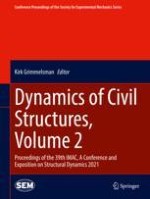2022 | OriginalPaper | Buchkapitel
Transfer Learning from Audio Domains a Valuable Tool for Structural Health Monitoring
verfasst von : Eleonora M. Tronci, Homayoon Beigi, Maria Q. Feng, Raimondo Betti
Erschienen in: Dynamics of Civil Structures, Volume 2
Aktivieren Sie unsere intelligente Suche, um passende Fachinhalte oder Patente zu finden.
Wählen Sie Textabschnitte aus um mit Künstlicher Intelligenz passenden Patente zu finden. powered by
Markieren Sie Textabschnitte, um KI-gestützt weitere passende Inhalte zu finden. powered by
